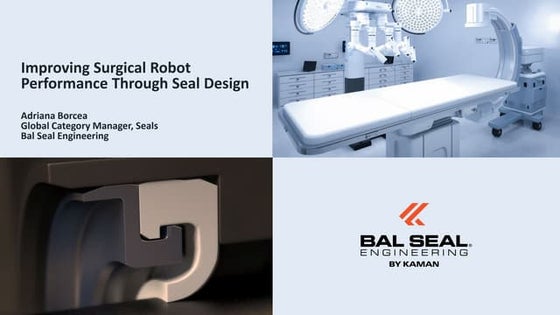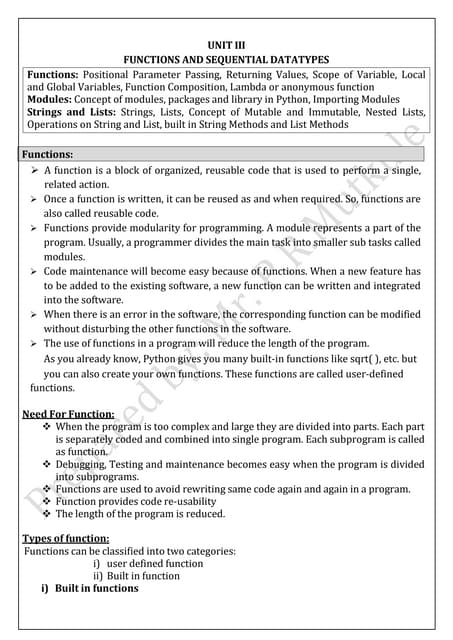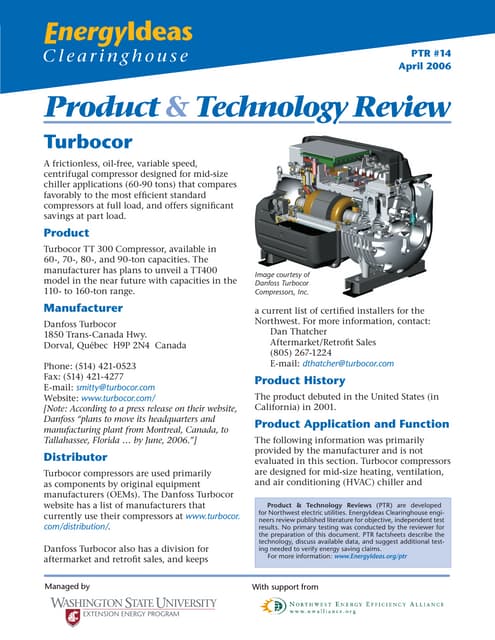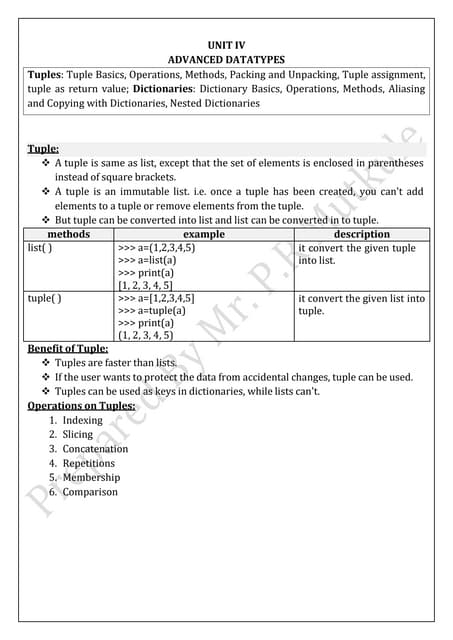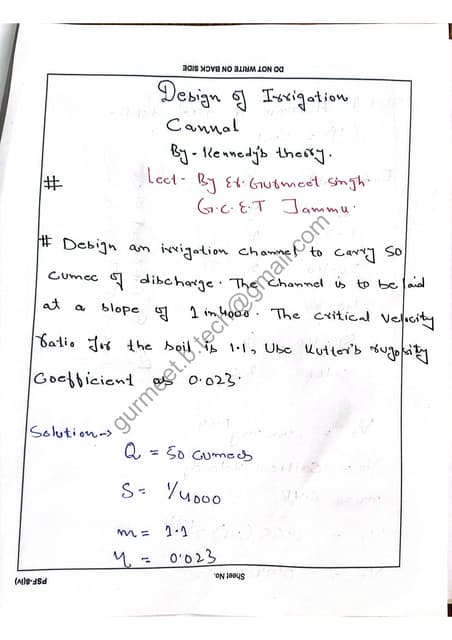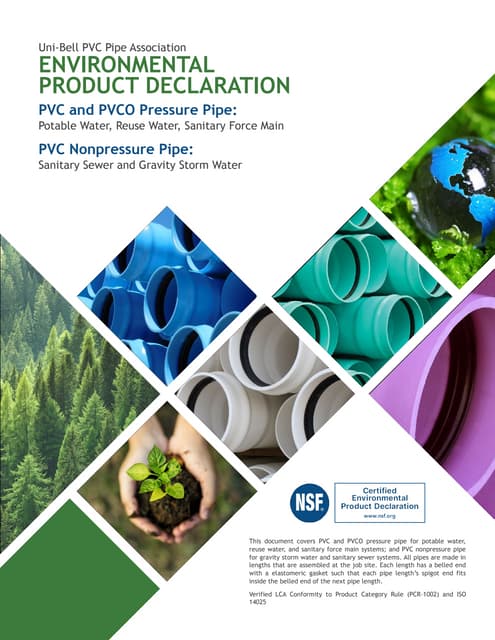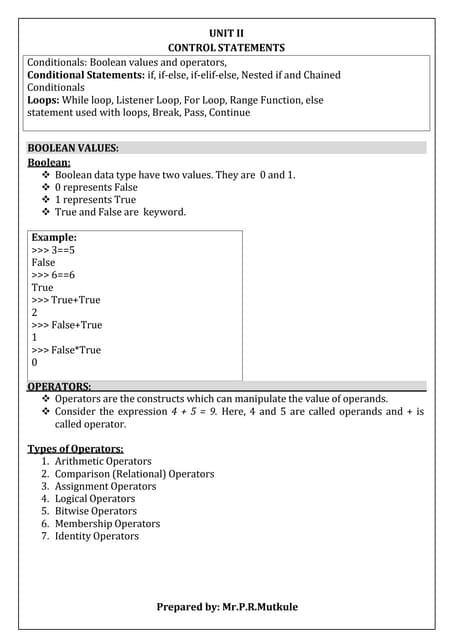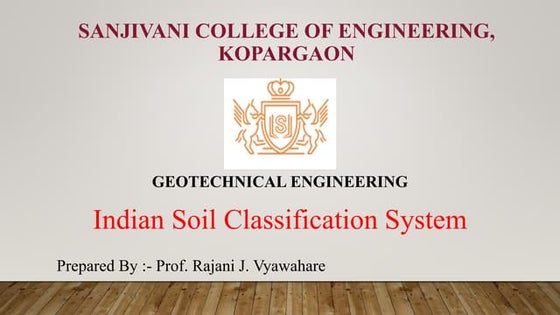mat_bal of reservoir engineering program.pptx
- 1. Material Balance for Oil Reservoirs Md. Mehedi Hasan Lecturer, Dept. of PME Jessore University of Science and Technology (JUST)
- 2. Uses of material balance Material balance calculations can be used to: ’āś Determine original oil and gas in place in the reservoir; ’āś Determine original water in place in the aquifer; ’āś Estimate expected oil and gas recoveries as a function of pressure decline in a closed reservoir producing by depletion drive, or as a function of water influx in a water-drive reservoir; ’āś Predict future behavior of a reservoir (production rates, pressure decline, and water influx); ’āś Verify volumetric estimates of original fluids in place; ’āś Verify future production rates and recoveries predicted by decline-curve analysis; ’āś Determine which primary producing drive mechanisms are responsible for a reservoir's observed behavior, and quantify the relative importance of each mechanism; ’āś Evaluate the effectiveness of a water drive; ’āś Study the interference of fields sharing a common aquifer.
- 3. Assumption for Material Balance ’üĄ The material balance equations considered assume tank type behavior at any given datum depth ’üĄ The reservoir is considered to have the same pressure and fluid properties at any location in the reservoir. ’üĄ This assumption is quite reasonable provided that quality production and static pressure measurements are obtained. ’üĄ Reservoir consider homogeneous porosity permeability
- 4. The Material Balance Equation The equation can be written on volumetric basis as: Initial volume = volume remaining + volume removed Before deriving the material balance, it is convenient to denote certain terms by symbols for brevity. The symbols used conform where possible to the standard nomenclature adopted by the Society of Petroleum Engineers (SPE)
- 5. Basic Principle p1 > p2 p3 p4 > > Undersaturated oil Bubble point Expanding Gas Cap Liquid shrinking due to liberation of dissolved gas Oil + dissolved gas Initial gas cap Expanded gas cap Expanded of oil + dissolved gas Reduction in PV due to increased grain packing and connate water expansion Pinit P >
- 6. The Material Balance Equation Terms Symbols Initial reservoir pressure, psi Pi Change in reservoir pressure = pi ŌłÆ p, psi ╬öp Bubble point pressure, psi Pb Initial (original) oil in place, STB N Cumulative oil produced, STB Np Cumulative water produced, bbl Wp Cumulative gas produced, scf Gp Cumulative gas-oil ratio, scf/STB Rp Instantaneous gas-oil ratio, scf/STB GOR Initial gas solubility, scf/STB Rsi Gas solubility, scf/STB Rs
- 7. The Material Balance Equation Terms Symbols Initial oil formation volume factor, bbl/STB Boi Oil formation volume factor, bbl/STB Bo Initial gas formation volume factor, bbl/scf Bgi Gas formation volume factor, bbl/scf Bg Cumulative water injected, STB Winj Cumulative gas injected, scf Ginj Cumulative water influx, bbl We Ratio of initial gas-cap-gas reservoir volume to initial reservoir oil volume , bbl/bbl m Initial gas-cap gas, scf G Pore volume, bbl P.V
- 8. The Material Balance Equation Terms Symbols Water compressibility, psiŌłÆ1 cw Formation (rock) compressibility, psiŌłÆ1 cf Gas formation volume factor of the gas cap gas ,bbl/scf Bg c Gas formation volume factor of the solution gas ,bbl/scf Bg s Cumulative gas production from gas cap Gpc Cumulative gas production from solution gas . Gps
- 9. In this lecture we will derive the material balance as a volumetric balance. Material balance is also a critical step in modern reservoir simulation where a mass balance of components within the different fluid phases is generally performed. Pinit P > A B Oil + dissolved gas Gas cap C wl = Expansion of oil + originally dissolved gas (B) (rb) + Expansion of gascap gas(A)(rb) + Reduction in PV due to expansion of connate water and tighter grain packing(C)(rb) that the volume balance is written in terms of fluid at oir conditions or as underground withdrawl and pansion. The Material Balance Equation
- 10. Data available to do material balance Production Data Np = Cumulative oil volume produced (stb) Rp = Cumulative gas-oil ratio = PVT properties Bo = Oil FVF (bbl/STB) Bg = Gas FVF (cu.ft/SCF) Bw = Water FVF(bbl/STB) Cw = Compressibility of water (psi-1 ) Rso = Solution Gas-Oil Ratio Reservoir properties Cf = Rock Compressibility Swi = Connate water saturation (stb) produced oil of volume Cum. (scf) produced gas of volume Cum.
- 11. Data available to do material balance (Cont.) N = Initial volume of oil in reservoir (rb) = (stb) m = Initial gas cap = These are listed as other parameters because these may either be known by wireline logs, reservoir modeling etc. Or they may be the objective of the material balance computation. (rb) oil of n volume hydrocarbo Initial (rb) gap gas of n volume hydrocarbo Initial oi wc B S V / ) 1 ( ’ĆŁ ’āŚ ’āŚ ’ü”
- 12. Derivation of the material balance Expansion of the oil + liberated gas mponents: nsion of oil: Initial Oil = N (stb) Initial oil at reservoir conditions = N Boi (rb) Volume of oil at reduced pressure p = N Bo (rb) Net oil expansion = N(Bo-Boi) (rb) nsion of liberated gas: issolved at initial condition = NRsi (scf) issolved at reduced pressure p = NRs (scf) ated gas = N(Rsi-Rs) (scf) me of gas at reservoir conditions= N(Rsi-Rs)Bg (rb)
- 13. Derivation of the material balance Expansion of the gas cap gas Expansion of the gascap gas = gascap gas (at p) ŌĆōgascap (at pi) RB SCF RB SCF B B mNB p at gas of Amount SCF SCF RB RB B mNB G or RB SCF RB STB SCF SCF mNB gas gascap of volume total The g gi oi gi oi oi ] [ ] [ 1 ) ( ] [ 1 ] [ 1 ] [ ] [ ’ĆĮ ’ĆĮ ’ĆĮ ’ĆĮ ’ĆĮ ’ĆĮ ’ĆĮ ’ĆĮ ’ĆĮ ) 3 . 3 ( ) ( ) 1 ( ] [ ’üī ’üī ’üī ’üī ’üī RB B B mNB RB mNB B B mNB gas gascap the of Expansion gi g oi oi gi g oi ’ĆŁ ’ĆĮ ’ĆĮ ’ĆŁ ’ĆĮ
- 14. Derivation of the material balance (Cont.) Change in the HCPV due to the connate water expansion & pore volume reduction p S c S c NB m p c S c S mNBoi NBoi p c S c S HCPV p c S c V p V c S V c S V vol water connate the V p V c V c S HCPV vol pore total the V dV dV HCPV d wc f wc w oi f wc w w f wc w w f wc w f f f wc f w wc f w f f w w w f f w ’üä ’ĆŁ ’Ć½ ’Ć½ ’ĆŁ ’ĆĮ ’üä ’Ć½ ’ĆŁ ’Ć½ ’ĆŁ ’ĆĮ ’üä ’Ć½ ’ĆŁ ’ĆŁ ’ĆĮ ’üä ’Ć½ ’ĆŁ ’ĆĮ ’üä ’Ć½ ’āŚ ’ĆŁ ’ĆĮ ’āŚ ’ĆĮ ’ĆĮ ’üä ’Ć½ ’ĆŁ ’ĆĮ ’ĆŁ ’ĆĮ ’ĆĮ ’Ć½ ’ĆŁ ’ĆĮ ) 1 ( ) 1 ( ) ( ) 1 ( ) ( ) 1 ( ) ( ) ( . ) ( ) 1 /( . ) (
- 15. Derivation of the material balance (Cont.) Underground withdrawal ] ) ( [ ) ( ) ( ) ( ) ( ) ( ) ( Pr g s p o p g s p p o p g s p p p o p p p p B R R B N B R R N B N withdrawal d Undergroun gas RB B R N R N oil RB B N withdrawal d Undergroun gas SCF R N oil STB N surface at oduction ’ĆŁ ’Ć½ ’ĆĮ ’ĆŁ ’Ć½ ’ĆĮ ’ā× ’ĆŁ ’ĆŁ ’ĆŁ ’ĆŁ ’ĆŁ
- 16. Derivation of the material balance (Cont.) Withdrawal = Expansion of oil +originally (rb) dissolved gas (B) (rb) + Expansion of gascap gas(A)(rb) + Reduction in HCPV due to expansion of connate water and tighter grain packing(C)(rb) ║▌║▌▀Ż: 15=12+13+14
- 17. The general expression for the material balance as w p e wc f wc w oi gi g oi g s si oi o g s p o p B W W p S c S c NB m B B mNB B R R N B B N B R R B N ) ( ) 1 ( ) 1 ( ) 1 ( ) ( ) ( ] ) ( [ ’ĆŁ ’Ć½ ’üä ’ĆŁ ’Ć½ ’Ć½ ’Ć½ ’ĆŁ ’Ć½ ’ĆŁ ’Ć½ ’ĆŁ ’ĆĮ ’ĆŁ ’Ć½ ) 7 . 3 ( ) ( 1 ) 1 ( 1 ) ( ) ( ] ) ( [ ’üī ’üī ’üī ’üī ’üī w p e wc f wc w gi g oi g s si oi o oi g s p o p B W W p S c S c m B B m B B R R B B NB B R R B N ’ĆŁ ’Ć½ ’ā║ ’ā║ ’ā╗ ’ā╣ ’ā¬ ’ā¬ ’ā½ ’ā® ’üä ’āĘ ’āĘ ’āĖ ’āČ ’ā¦ ’ā¦ ’ā© ’ā” ’ĆŁ ’Ć½ ’Ć½ ’Ć½ ’āĘ ’āĘ ’āĖ ’āČ ’ā¦ ’ā¦ ’ā© ’ā” ’ĆŁ ’Ć½ ’ĆŁ ’Ć½ ’ĆŁ ’ĆĮ ’ĆŁ ’Ć½ ’ā× p measuring difficulty Main p V c dV fluids reservoir of Expansion oduction form Simple t p f W p f B R B Note e g s o : Pr : ) , ( ) ( , , : ’üä ’āŚ ’āŚ ’ĆĮ ’ĆĮ ’ĆĮ ’ĆĮ
- 18. Features of MBE ’üĄ It is zero dimensional, meaning that it is evaluated at a point in the reservoir ’üĄ Lack of time dependence ’üĄ Pressure only appears explicitly in the water and pore compressibility. ’üĄ Water influx is pressure and time depended parameter ’üĄ The equation is always evaluated in the way it was derived by comparing the current volumes at pressure P to the original volumes at Pi. It is not evaluated in steps ŌĆōwise or differential fashion.
- 19. The general expression for the material balance as w p e wc f wc w oi gi g oi g s si oi o g s p o p B W W p S c S c NB m B B mNB B R R N B B N B R R B N ) ( ) 1 ( ) 1 ( ) 1 ( ) ( ) ( ] ) ( [ ’ĆŁ ’Ć½ ’üä ’ĆŁ ’Ć½ ’Ć½ ’Ć½ ’ĆŁ ’Ć½ ’ĆŁ ’Ć½ ’ĆŁ ’ĆĮ ’ĆŁ ’Ć½ ) 7 . 3 ( ) ( 1 ) 1 ( 1 ) ( ) ( ] ) ( [ ’üī ’üī ’üī ’üī ’üī w p e wc f wc w gi g oi g s si oi o oi g s p o p B W W p S c S c m B B m B B R R B B NB B R R B N ’ĆŁ ’Ć½ ’ā║ ’ā║ ’ā╗ ’ā╣ ’ā¬ ’ā¬ ’ā½ ’ā® ’üä ’āĘ ’āĘ ’āĖ ’āČ ’ā¦ ’ā¦ ’ā© ’ā” ’ĆŁ ’Ć½ ’Ć½ ’Ć½ ’āĘ ’āĘ ’āĖ ’āČ ’ā¦ ’ā¦ ’ā© ’ā” ’ĆŁ ’Ć½ ’ĆŁ ’Ć½ ’ĆŁ ’ĆĮ ’ĆŁ ’Ć½ ’ā× F E Eg E f w w p e w B W WeB ’ĆŁ
- 20. where ) 12 . 3 ( ) ( , ’üī ’üī ’üī ’üī ’üī w e w f g o B W mE mE E N F ’Ć½ ’Ć½ ’Ć½ ’ĆĮ STB RB p S c S c B m E STB RB B B B E STB RB B R R B B E RB B W B R R B N F wc f wc w oi w f gi g oi g g s si oi o o w p g s p o p ’üä ’ĆŁ ’Ć½ ’Ć½ ’ĆĮ ’ĆĮ ’ĆŁ ’ĆĮ ’ĆĮ ’ĆŁ ’Ć½ ’ĆŁ ’ĆĮ ’ĆĮ ’Ć½ ’ĆŁ ’Ć½ ’ĆĮ ) 1 ( ) 1 ( ] [ ) 1 ( ] [ ) ( ) ( ] [ ] ) ( [ , Material Balance Expressed as a Liner Equation
- 21. ’üĄ No initial gascap, negligible water influx ’üĄ With water influx eq(3.12) becomes ’üĄ Eq.(3.12) having a combination drive-all possible sources of energy. 0 & ’é« w f c c ) 13 . 3 ( ) 12 . 3 .( ’üī ’üī ’üī ’üī ’üī o NE F Eq ’ĆĮ ’ā× ) 14 . 3 ( ’üī ’üī ’üī ’üī ’üī o e o E W N E F ’Ć½ ’ĆĮ ) 12 . 3 ( ) ( , ’üī ’üī ’üī ’üī ’üī w e w f g o B W mE mE E N F ’Ć½ ’Ć½ ’Ć½ ’ĆĮ Material Balance Expressed as a Liner Equation (Cont.)
- 22. ┬¦ 3.4 Reservoir Drive Mechanisms - Solution gas drive - Gascap drive -Natural water drive - Compaction drive In terms of -reducing the M.B to a compact form to quantify reservoir performance -determining the main producing characteristics, for example, GOR; water cut -determining the pressure decline in the reservoir - estimating the primary recovery factor Reservoir drive mechanism
- 23. Reservoir Drive Mechanisms ┬¦ 3.5 Solution gas drive (a) above the B.P. pressure (b) below the B.P. pressure
- 24. Above the B.P. pressure - no initial gascap, m=0 - no water flux, We=0 ; no water production, Wp=0 - Rs=Rsi=Rp from eq.(3.7) ) 7 . 3 ( ) ( 1 ) 1 ( 1 ) ( ) ( ] ) ( [ ’üī ’üī ’üī ’üī ’üī w p e wc f wc w gi g oi g s si oi o oi g s p o p B W W p S c S c m B B m B B R R B B NB B R R B N ’ĆŁ ’Ć½ ’ā║ ’ā║ ’ā╗ ’ā╣ ’ā¬ ’ā¬ ’ā½ ’ā® ’üä ’āĘ ’āĘ ’āĖ ’āČ ’ā¦ ’ā¦ ’ā© ’ā” ’ĆŁ ’Ć½ ’Ć½ ’Ć½ ’āĘ ’āĘ ’āĖ ’āČ ’ā¦ ’ā¦ ’ā© ’ā” ’ĆŁ ’Ć½ ’ĆŁ ’Ć½ ’ĆŁ ’ĆĮ ’ĆŁ ’Ć½ 0 ; 0 ; 0 ; 0 ) ( ; 0 ) ( : ’ĆĮ ’ĆĮ ’ĆĮ ’ĆĮ ’ĆŁ ’ĆĮ ’ĆŁ p e s si s p W W m R R R R Note ility compressib weighted saturation effective the S c S c S c c where S S p c NB B N or p B B B p B B B p S c S c S c NB B N dp dB B dp dV V c p S c S c c NB B N p S c s c B B B NB B N wc f w w o o e wc o e oi o p oi oi o oi o oi wc f w w o o oi o p o o o o o wc f w w o oi o p wc f wc w oi oi o oi o p ’ĆŁ ’ĆĮ ’ĆŁ ’Ć½ ’Ć½ ’ĆĮ ’ĆĮ ’Ć½ ’üä ’ĆĮ ’üä ’ĆŁ ’ĆĮ ’üä ’ĆŁ ’ĆŁ ’é╗ ’üä ’ĆŁ ’Ć½ ’Ć½ ’ĆĮ ’ā× ’ĆŁ ’ĆĮ ’ĆŁ ’ĆĮ ’üä ’ĆŁ ’Ć½ ’Ć½ ’ĆĮ ’ā× ’üä ’ĆŁ ’Ć½ ’Ć½ ’ĆŁ ’ĆĮ ’ā× , 1 1 ) 18 . 3 ( ) ( ) ( ) 17 . 3 ( ) 1 ( 1 1 )] 1 ( [ ] 1 ) ( ) ( [ ’üī ’üī ’üī ’üī ’üī ’üī ’üī ’üī ’üī ’üī
- 25. Exercise3.1 Solution gas drive, undersaturated oil reservoir Determine R.F. Solution: FromTable2.4(p.65) 2 . 0 10 6 . 8 10 3 ) 65 . ( 4 . 2 1 6 1 6 ’ĆĮ ’é┤ ’ĆĮ ’é┤ ’ĆĮ ’ĆŁ ’é« ’ĆŁ ’ĆŁ ’ĆŁ ’ĆŁ ’ĆŁ w f w b i S psi c psi c p table PVT p p p if STB RB B psi p STB RB B psi p ob b oi i 12511 , 3330 2417 . 1 , 4000 ’ĆĮ ’ĆĮ ’ĆĮ ’ĆĮ 1 6 10 3 . 11 ) 3330 4000 ( 2417 . 1 2417 . 1 2511 . 1 1 1 ’ĆŁ ’ĆŁ ’é┤ ’ĆĮ ’ĆŁ ’ĆŁ ’ĆĮ ’üä ’ĆŁ ’ĆĮ ’ĆŁ ’ĆĮ ’ĆŁ ’ĆĮ psi p B B B c dp dB B dp dV V c oi oi ob o o o o o o Eq(3.18) % 5 . 1 015 . 0 ) 3330 4000 ( 10 8 . 22 2511 . 1 2417 . 1 . . 6 ’ĆĮ ’ĆĮ ’ĆŁ ’é┤ ’é┤ ’é┤ ’ĆĮ ’üä ’ĆĮ ’ĆĮ ’üä ’ĆĮ ’ĆŁ p c B B N N F R p c NB B N e ob oi Pb p e oi o p ) 1 )( 1 /( 1 wc f w w o o S c S c S c Swc Ce ’ĆŁ ’Ć½ ’Ć½ ’ĆŁ ’ĆĮ
- 26. Table 2.4 Field PVT P(psia) Bo (Rb/STB) Rs(SCF/STB) Bg( Rb/SCF) 4000 (pi) 1.2417 510 3500 1.2480 510 3300 (pb) 1.2511 510 0.00087 3000 1.2222 450 0.00096 2700 1.2022 401 0.00107 2701 1.1822 352 0.00119 2702 1.1633 304 0.00137 1800 1.1450 257 0.00161 2703 1.1287 214 0.00196 1200 1.1115 167 0.00249 2704 1.0940 122 0.00339 2705 1.0763 78 0.00519 300 1.0583 35 0.01066
- 28. Bo as Function of Pressure
- 29. Rs as Function of Pressure
- 30. Bg and E as Function of Pressure E= Gas expansion
- 31. Producing Gas-oil Ratio (R) as Function of Pressure
- 32. Below B.P. pressure (Saturation oil) P<Pb =>gas liberated from saturated oil 1 6 1 6 1 6 1 6 1 6 10 6 . 8 10 3 10 3 . 11 10 300 10 300 3300 1 1 1 ’ĆŁ ’ĆŁ ’ĆŁ ’ĆŁ ’ĆŁ ’ĆŁ ’ĆŁ ’ĆŁ ’ĆŁ ’ĆŁ ’é┤ ’ĆĮ ’é┤ ’ĆĮ ’é┤ ’ĆĮ ’é┤ ’ĆĮ ’ĆĮ ’é┤ ’ĆĮ ’ĆĮ ’é╗ psi c psi c psi c psi c psi P p c f w o g b g
- 33. Exercise 3.2 Solution gas drive; below bubble point pressure Reservoir-described in exercise 3.1 Pabandon = 900psia (1) R.F = f(Rp)? Conclusion? (2) Sg(free gas) = F(Pabandon)? Solution: (1) From eq(3.7) ) 7 . 3 ( ) ( 1 ) 1 ( 1 ) ( ) ( ] ) ( [ ’üī ’üī ’üī ’üī ’üī w p e wc f wc w gi g oi g s si oi o oi g s p o p B W W p S c S c m B B m B B R R B B NB B R R B N ’ĆŁ ’Ć½ ’ā║ ’ā║ ’ā╗ ’ā╣ ’ā¬ ’ā¬ ’ā½ ’ā® ’üä ’āĘ ’āĘ ’āĖ ’āČ ’ā¦ ’ā¦ ’ā© ’ā” ’ĆŁ ’Ć½ ’Ć½ ’Ć½ ’āĘ ’āĘ ’āĖ ’āČ ’ā¦ ’ā¦ ’ā© ’ā” ’ĆŁ ’Ć½ ’ĆŁ ’Ć½ ’ĆŁ ’ĆĮ ’ĆŁ ’Ć½ developed is S if negligible is p S c S c NB W W cap gas initial no m P B below gas solution for g wc f wc w oi p e ’üä ’ĆŁ ’Ć½ ’ĆŁ ’ĆĮ ’ĆĮ ’ĆŁ ’ĆĮ ’ĆŁ ) 1 ( 0 ; 0 0 . .
- 34. Eq(3.7) becomes ) 20 . 3 ( ] ) ( ) [( ] ) ( [ ’üī ’üī ’üī ’üī ’üī g s si oi o g s p o p B R R B B N B R R B N ’ĆŁ ’Ć½ ’ĆŁ ’ĆĮ ’ĆŁ ’Ć½ 201 344 00339 . 0 ) 122 ( 0940 . 1 00339 . 0 ) 122 510 ( ) 2417 . 1 0940 . 1 ( . . ) ( ) ( ) ( . . 900 900 ’Ć½ ’ĆĮ ’é┤ ’ĆŁ ’Ć½ ’é┤ ’ĆŁ ’Ć½ ’ĆŁ ’ĆĮ ’ĆĮ ’ĆŁ ’Ć½ ’ĆŁ ’Ć½ ’ĆŁ ’ĆĮ ’ĆĮ ’ĆĮ ’ĆĮ p p p p p g s p o g s si oi o p R R N N F R B R R B B R R B B N N F R Conclusion: Rp RF 1 ’é╗ 49 . 0 % 49 500 ) 85 . ( 3 . 3 . 900 ’ĆĮ ’ĆĮ ’ā× ’ĆĮ N N STB SCF R p Fig From p p
- 36. (2) the overall gas balance ) 21 . 3 ( ) 1 ( )] ( ) ( [ ) ( ) 1 ( ) 1 ( 1 ’üī ’üī ’üī ’üī ’üī oi wc g s p p s si g g s p g p p g si wc g oi b wc wc oi NB S B R R N R R N S B R N N B R N B NR S S NB p p for S HCPV volume pore S NB ’ĆŁ ’ĆŁ ’ĆŁ ’ĆŁ ’ĆĮ ’ā× ’ĆŁ ’ĆŁ ’ĆŁ ’ĆĮ ’ĆŁ ’ā× ’ĆŠ ’ĆŁ ’ĆĮ ’ĆĮ ’ĆŁ liberated gas in the reservoir total amount of gas gas produced at surface gas still dissolved in the oil = ŌłÆ ŌłÆ - 4428 . 0 8 . 0 00339 . 0 2417 . 1 )] 122 500 ( 49 . 0 ) 122 510 [( ) 1 ( )] ( ) [( ) 1 ( )] ( ) ( [ ’ĆĮ ’é┤ ’é┤ ’ĆŁ ’ĆŁ ’ĆŁ ’ĆĮ ’ĆŁ ’ĆŁ ’ĆŁ ’ĆŁ ’ĆĮ ’ĆŁ ’ĆŁ ’ĆŁ ’ĆŁ ’ĆĮ wc g oi s p p s si oi wc g s p s si g S B B R R N N R R NB S B R R Np R R N S
- 39. Water injection below bubble point Pressure
- 40. Exercise 3.3 (Cont.) ’üĄ To produced 10,000stb/d oil initial injection rate 4X10,000 = 40,000 rb/d water required ’üĄ 70 % water needed to displace the liberated gas ’üĄ Above bubble point 1.2511x 10,000 =12500 b/d
- 41. Gascap Drive
- 42. Gascap Drive ’āś Under initial conditions the oil at the gas oil contract must be at saturation or bubble point pressure. ’āś The oil further downdip becomes progressively less saturated at the higher pressure and temperature. ’āś Assuming , natural water influx is negligible (We= 0) ’āś Gas compressibility >> than formation, so its also negligible
- 43. Gascap Drive (Cont.) ’üĄ The right side of Equation 3.23,describing the expansion of oil plus originally dissolved gas ’üĄ The solution gas drive mechanism active with oil column. ’üĄ For better understanding , Havlena aand Odeh derive a simple form of above equation F= N(Eo + mEg)--------------------------------3.24 F=Np(Bo+(Rp-Rs)Bg) Eo= (Bo-Boi) + (Rsi-Rs)Bg Eg= Boi(Bg/Bgi ŌĆō 1) If the correct value of m taken , the line must be in straight line.
- 45. Exercise 3.4 ’üĄ The gascap reservoir shown in fig. 3.6 is estimated, from volumetric calculations, to have had an initial oil volume N of 115 ├Ś 106 stb. The cumulative oil production ’üĄ Np and cumulative gas oil ratio Rp are listed in table 3.1, as functions of the average reservoir pressure, over the first few years of production. (Also listed are the relevant PVT data, again taken from table 2.4, under the assumption that, for this particular application, Pi= Pb = 3330 psia).
- 46. Exercise 3.4 cont. ’üĄ The size of the gascap is uncertain with the best estimate, based on geological information, giving the value of m = 0.4. Is this figure confirmed by the production and pressure history? If not, what is the correct value of m?
- 47. Exercise 3.4: Solution ’üĄ Havlena aand Odeh equation F= N(Eo + mEg)--------------------------------3.24 F=Np (Bo+(Rp-Rs)Bg) Eo= (Bo-Boi) + (Rsi-Rs)Bg Eg= Boi(Bg/Bgi ŌĆō 1)
- 48. Exercise 3.4: Solution (Cont.) ’üĄ According equation 3.8-3.10 , the value of this parameters given at table below:
- 49. Exercise 3.4: Solution (Cont.) ’üĄ Plot F Vs.(Eo+mEg) in a graph paper
- 50. Exercise 3.4: Solution (Cont.) ’üĄ For m=0.4; N= 132X10^6 stb ’üĄ For m=0.5 ; N= 114X 10^6 stb ’üĄ For m=0.6 ; N= 101X10^6 stb ’üĄ If there uncertainty in the value of N and m then Havlna and Odeh suggest that (eqn 3.24) re-expressed as ’üĄ F/Eo = N + mN (Eg/Eo) ’üĄ A plot F/Eo Vs Eg/Eo vs. Eg/Eo should be linear intercept N
- 51. Exercise 3.4: Solution (Cont.)
- 52. Exercise 3.4: Solution (Cont.) 3.8 4 4.2 4.4 4.6 4.8 5 0 50 100 150 200 250 300 350 400 Chart Title Eg/Eo F/Eo
- 53. Natural Water Drive ’üĄ Its different from water injection ’üĄ A drop in the reservoir pressure, due to the production of the fluids , causes the aquifer water to expand and flow into the reservoir Applying the compressibility definition to the aquifer than Water Influx = Aquifer Compressibility X Initial Volume of Water X Pressure Drop Or, We = (Cw+Cf) Wi Ōłå P In which the total aquifer compressibility is the direct sum of the water and pore compressibilities since the pore space is entirely saturated with water. If the aquifer small, its effect is not visible . Its only applicable for large aquifer.
- 54. Natural Water Drive (Cont.) ’üĄ Havlna and Odeh equation can be expressed as F = N (Eo +m Eg + Ef,w ) + We If the reservoir has no initial gascap, than the equation expressed as F = N Eo + We We = (Cw + Cf )ŽĆ (re^2 ŌłÆ ro^2 ) fhŽå Ōłå P re and ro are the radii of the aquifer and reservoir.
- 55. Natural Water Drive (Cont.)
- 56. Compaction Drive and Pore Compressibility ’üĄ The compaction depends only upon the difference between the vertically applied stress (overburden ) and initial stress (fluid pressure ) ’üĄ At low grain pressure the compressibility of the compacted sample is very high.
- 57. Compaction Drive and Pore Compressibility
- 58. Compaction Drive and Pore Compressibility













![Derivation of the material balance
Expansion of the gas cap gas
Expansion of the gascap gas = gascap gas (at p) ŌĆōgascap (at pi)
RB
SCF
RB
SCF
B
B
mNB
p
at
gas
of
Amount
SCF
SCF
RB
RB
B
mNB
G
or
RB
SCF
RB
STB
SCF
SCF
mNB
gas
gascap
of
volume
total
The
g
gi
oi
gi
oi
oi
]
[
]
[
1
)
(
]
[
1
]
[
1
]
[
]
[
’ĆĮ
’ĆĮ
’ĆĮ
’ĆĮ
’ĆĮ
’ĆĮ
’ĆĮ
’ĆĮ
’ĆĮ
)
3
.
3
(
)
(
)
1
(
]
[
’üī
’üī
’üī
’üī
’üī
RB
B
B
mNB
RB
mNB
B
B
mNB
gas
gascap
the
of
Expansion
gi
g
oi
oi
gi
g
oi
’ĆŁ
’ĆĮ
’ĆĮ
’ĆŁ
’ĆĮ](https://image.slidesharecdn.com/matbal-250107065238-9942c558/85/mat_bal-of-reservoir-engineering-program-pptx-13-320.jpg)

![Derivation of the material balance (Cont.)
Underground withdrawal
]
)
(
[
)
(
)
(
)
(
)
(
)
(
)
(
Pr
g
s
p
o
p
g
s
p
p
o
p
g
s
p
p
p
o
p
p
p
p
B
R
R
B
N
B
R
R
N
B
N
withdrawal
d
Undergroun
gas
RB
B
R
N
R
N
oil
RB
B
N
withdrawal
d
Undergroun
gas
SCF
R
N
oil
STB
N
surface
at
oduction
’ĆŁ
’Ć½
’ĆĮ
’ĆŁ
’Ć½
’ĆĮ
’ā×
’ĆŁ
’ĆŁ
’ĆŁ
’ĆŁ
’ĆŁ](https://image.slidesharecdn.com/matbal-250107065238-9942c558/85/mat_bal-of-reservoir-engineering-program-pptx-15-320.jpg)

![The general expression for the material balance as
w
p
e
wc
f
wc
w
oi
gi
g
oi
g
s
si
oi
o
g
s
p
o
p
B
W
W
p
S
c
S
c
NB
m
B
B
mNB
B
R
R
N
B
B
N
B
R
R
B
N
)
(
)
1
(
)
1
(
)
1
(
)
(
)
(
]
)
(
[
’ĆŁ
’Ć½
’üä
’ĆŁ
’Ć½
’Ć½
’Ć½
’ĆŁ
’Ć½
’ĆŁ
’Ć½
’ĆŁ
’ĆĮ
’ĆŁ
’Ć½
)
7
.
3
(
)
(
1
)
1
(
1
)
(
)
(
]
)
(
[
’üī
’üī
’üī
’üī
’üī
w
p
e
wc
f
wc
w
gi
g
oi
g
s
si
oi
o
oi
g
s
p
o
p
B
W
W
p
S
c
S
c
m
B
B
m
B
B
R
R
B
B
NB
B
R
R
B
N
’ĆŁ
’Ć½
’ā║
’ā║
’ā╗
’ā╣
’ā¬
’ā¬
’ā½
’ā®
’üä
’āĘ
’āĘ
’āĖ
’āČ
’ā¦
’ā¦
’ā©
’ā”
’ĆŁ
’Ć½
’Ć½
’Ć½
’āĘ
’āĘ
’āĖ
’āČ
’ā¦
’ā¦
’ā©
’ā”
’ĆŁ
’Ć½
’ĆŁ
’Ć½
’ĆŁ
’ĆĮ
’ĆŁ
’Ć½
’ā×
p
measuring
difficulty
Main
p
V
c
dV
fluids
reservoir
of
Expansion
oduction
form
Simple
t
p
f
W
p
f
B
R
B
Note
e
g
s
o
:
Pr
:
)
,
(
)
(
,
,
:
’üä
’āŚ
’āŚ
’ĆĮ
’ĆĮ
’ĆĮ
’ĆĮ](https://image.slidesharecdn.com/matbal-250107065238-9942c558/85/mat_bal-of-reservoir-engineering-program-pptx-17-320.jpg)

![The general expression for the material balance as
w
p
e
wc
f
wc
w
oi
gi
g
oi
g
s
si
oi
o
g
s
p
o
p
B
W
W
p
S
c
S
c
NB
m
B
B
mNB
B
R
R
N
B
B
N
B
R
R
B
N
)
(
)
1
(
)
1
(
)
1
(
)
(
)
(
]
)
(
[
’ĆŁ
’Ć½
’üä
’ĆŁ
’Ć½
’Ć½
’Ć½
’ĆŁ
’Ć½
’ĆŁ
’Ć½
’ĆŁ
’ĆĮ
’ĆŁ
’Ć½
)
7
.
3
(
)
(
1
)
1
(
1
)
(
)
(
]
)
(
[
’üī
’üī
’üī
’üī
’üī
w
p
e
wc
f
wc
w
gi
g
oi
g
s
si
oi
o
oi
g
s
p
o
p
B
W
W
p
S
c
S
c
m
B
B
m
B
B
R
R
B
B
NB
B
R
R
B
N
’ĆŁ
’Ć½
’ā║
’ā║
’ā╗
’ā╣
’ā¬
’ā¬
’ā½
’ā®
’üä
’āĘ
’āĘ
’āĖ
’āČ
’ā¦
’ā¦
’ā©
’ā”
’ĆŁ
’Ć½
’Ć½
’Ć½
’āĘ
’āĘ
’āĖ
’āČ
’ā¦
’ā¦
’ā©
’ā”
’ĆŁ
’Ć½
’ĆŁ
’Ć½
’ĆŁ
’ĆĮ
’ĆŁ
’Ć½
’ā×
F
E Eg
E f w
w
p
e
w B
W
WeB ’ĆŁ](https://image.slidesharecdn.com/matbal-250107065238-9942c558/85/mat_bal-of-reservoir-engineering-program-pptx-19-320.jpg)
![where
)
12
.
3
(
)
( , ’üī
’üī
’üī
’üī
’üī
w
e
w
f
g
o B
W
mE
mE
E
N
F ’Ć½
’Ć½
’Ć½
’ĆĮ
STB
RB
p
S
c
S
c
B
m
E
STB
RB
B
B
B
E
STB
RB
B
R
R
B
B
E
RB
B
W
B
R
R
B
N
F
wc
f
wc
w
oi
w
f
gi
g
oi
g
g
s
si
oi
o
o
w
p
g
s
p
o
p
’üä
’ĆŁ
’Ć½
’Ć½
’ĆĮ
’ĆĮ
’ĆŁ
’ĆĮ
’ĆĮ
’ĆŁ
’Ć½
’ĆŁ
’ĆĮ
’ĆĮ
’Ć½
’ĆŁ
’Ć½
’ĆĮ
)
1
(
)
1
(
]
[
)
1
(
]
[
)
(
)
(
]
[
]
)
(
[
,
Material Balance Expressed as a Liner Equation](https://image.slidesharecdn.com/matbal-250107065238-9942c558/85/mat_bal-of-reservoir-engineering-program-pptx-20-320.jpg)



![Above the B.P. pressure
- no initial gascap, m=0
- no water flux, We=0 ; no water production, Wp=0
- Rs=Rsi=Rp
from eq.(3.7)
)
7
.
3
(
)
(
1
)
1
(
1
)
(
)
(
]
)
(
[
’üī
’üī
’üī
’üī
’üī
w
p
e
wc
f
wc
w
gi
g
oi
g
s
si
oi
o
oi
g
s
p
o
p
B
W
W
p
S
c
S
c
m
B
B
m
B
B
R
R
B
B
NB
B
R
R
B
N
’ĆŁ
’Ć½
’ā║
’ā║
’ā╗
’ā╣
’ā¬
’ā¬
’ā½
’ā®
’üä
’āĘ
’āĘ
’āĖ
’āČ
’ā¦
’ā¦
’ā©
’ā”
’ĆŁ
’Ć½
’Ć½
’Ć½
’āĘ
’āĘ
’āĖ
’āČ
’ā¦
’ā¦
’ā©
’ā”
’ĆŁ
’Ć½
’ĆŁ
’Ć½
’ĆŁ
’ĆĮ
’ĆŁ
’Ć½
0
;
0
;
0
;
0
)
(
;
0
)
(
: ’ĆĮ
’ĆĮ
’ĆĮ
’ĆĮ
’ĆŁ
’ĆĮ
’ĆŁ p
e
s
si
s
p W
W
m
R
R
R
R
Note
ility
compressib
weighted
saturation
effective
the
S
c
S
c
S
c
c
where
S
S
p
c
NB
B
N
or
p
B
B
B
p
B
B
B
p
S
c
S
c
S
c
NB
B
N
dp
dB
B
dp
dV
V
c
p
S
c
S
c
c
NB
B
N
p
S
c
s
c
B
B
B
NB
B
N
wc
f
w
w
o
o
e
wc
o
e
oi
o
p
oi
oi
o
oi
o
oi
wc
f
w
w
o
o
oi
o
p
o
o
o
o
o
wc
f
w
w
o
oi
o
p
wc
f
wc
w
oi
oi
o
oi
o
p
’ĆŁ
’ĆĮ
’ĆŁ
’Ć½
’Ć½
’ĆĮ
’ĆĮ
’Ć½
’üä
’ĆĮ
’üä
’ĆŁ
’ĆĮ
’üä
’ĆŁ
’ĆŁ
’é╗
’üä
’ĆŁ
’Ć½
’Ć½
’ĆĮ
’ā×
’ĆŁ
’ĆĮ
’ĆŁ
’ĆĮ
’üä
’ĆŁ
’Ć½
’Ć½
’ĆĮ
’ā×
’üä
’ĆŁ
’Ć½
’Ć½
’ĆŁ
’ĆĮ
’ā×
,
1
1
)
18
.
3
(
)
(
)
(
)
17
.
3
(
)
1
(
1
1
)]
1
(
[
]
1
)
(
)
(
[
’üī
’üī
’üī
’üī
’üī
’üī
’üī
’üī
’üī
’üī](https://image.slidesharecdn.com/matbal-250107065238-9942c558/85/mat_bal-of-reservoir-engineering-program-pptx-24-320.jpg)








![Exercise 3.2 Solution gas drive; below bubble point pressure
Reservoir-described in exercise 3.1
Pabandon = 900psia
(1) R.F = f(Rp)? Conclusion?
(2) Sg(free gas) = F(Pabandon)?
Solution:
(1) From eq(3.7)
)
7
.
3
(
)
(
1
)
1
(
1
)
(
)
(
]
)
(
[
’üī
’üī
’üī
’üī
’üī
w
p
e
wc
f
wc
w
gi
g
oi
g
s
si
oi
o
oi
g
s
p
o
p
B
W
W
p
S
c
S
c
m
B
B
m
B
B
R
R
B
B
NB
B
R
R
B
N
’ĆŁ
’Ć½
’ā║
’ā║
’ā╗
’ā╣
’ā¬
’ā¬
’ā½
’ā®
’üä
’āĘ
’āĘ
’āĖ
’āČ
’ā¦
’ā¦
’ā©
’ā”
’ĆŁ
’Ć½
’Ć½
’Ć½
’āĘ
’āĘ
’āĖ
’āČ
’ā¦
’ā¦
’ā©
’ā”
’ĆŁ
’Ć½
’ĆŁ
’Ć½
’ĆŁ
’ĆĮ
’ĆŁ
’Ć½
developed
is
S
if
negligible
is
p
S
c
S
c
NB
W
W
cap
gas
initial
no
m
P
B
below
gas
solution
for
g
wc
f
wc
w
oi
p
e
’üä
’ĆŁ
’Ć½
’ĆŁ
’ĆĮ
’ĆĮ
’ĆŁ
’ĆĮ
’ĆŁ
)
1
(
0
;
0
0
.
.](https://image.slidesharecdn.com/matbal-250107065238-9942c558/85/mat_bal-of-reservoir-engineering-program-pptx-33-320.jpg)
![Eq(3.7) becomes
)
20
.
3
(
]
)
(
)
[(
]
)
(
[ ’üī
’üī
’üī
’üī
’üī
g
s
si
oi
o
g
s
p
o
p B
R
R
B
B
N
B
R
R
B
N ’ĆŁ
’Ć½
’ĆŁ
’ĆĮ
’ĆŁ
’Ć½
201
344
00339
.
0
)
122
(
0940
.
1
00339
.
0
)
122
510
(
)
2417
.
1
0940
.
1
(
.
.
)
(
)
(
)
(
.
.
900
900
’Ć½
’ĆĮ
’é┤
’ĆŁ
’Ć½
’é┤
’ĆŁ
’Ć½
’ĆŁ
’ĆĮ
’ĆĮ
’ĆŁ
’Ć½
’ĆŁ
’Ć½
’ĆŁ
’ĆĮ
’ĆĮ
’ĆĮ
’ĆĮ
p
p
p
p
p
g
s
p
o
g
s
si
oi
o
p
R
R
N
N
F
R
B
R
R
B
B
R
R
B
B
N
N
F
R
Conclusion:
Rp
RF
1
’é╗
49
.
0
%
49
500
)
85
.
(
3
.
3
.
900
’ĆĮ
’ĆĮ
’ā×
’ĆĮ
N
N
STB
SCF
R
p
Fig
From
p
p](https://image.slidesharecdn.com/matbal-250107065238-9942c558/85/mat_bal-of-reservoir-engineering-program-pptx-34-320.jpg)

![(2) the overall gas balance
)
21
.
3
(
)
1
(
)]
(
)
(
[
)
(
)
1
(
)
1
(
1
’üī
’üī
’üī
’üī
’üī
oi
wc
g
s
p
p
s
si
g
g
s
p
g
p
p
g
si
wc
g
oi
b
wc
wc
oi
NB
S
B
R
R
N
R
R
N
S
B
R
N
N
B
R
N
B
NR
S
S
NB
p
p
for
S
HCPV
volume
pore
S
NB
’ĆŁ
’ĆŁ
’ĆŁ
’ĆŁ
’ĆĮ
’ā×
’ĆŁ
’ĆŁ
’ĆŁ
’ĆĮ
’ĆŁ
’ā×
’ĆŠ
’ĆŁ
’ĆĮ
’ĆĮ
’ĆŁ
liberated
gas in the
reservoir
total
amount
of gas
gas
produced
at surface
gas still
dissolved
in the oil
= ŌłÆ ŌłÆ -
4428
.
0
8
.
0
00339
.
0
2417
.
1
)]
122
500
(
49
.
0
)
122
510
[(
)
1
(
)]
(
)
[(
)
1
(
)]
(
)
(
[
’ĆĮ
’é┤
’é┤
’ĆŁ
’ĆŁ
’ĆŁ
’ĆĮ
’ĆŁ
’ĆŁ
’ĆŁ
’ĆŁ
’ĆĮ
’ĆŁ
’ĆŁ
’ĆŁ
’ĆŁ
’ĆĮ wc
g
oi
s
p
p
s
si
oi
wc
g
s
p
s
si
g S
B
B
R
R
N
N
R
R
NB
S
B
R
R
Np
R
R
N
S](https://image.slidesharecdn.com/matbal-250107065238-9942c558/85/mat_bal-of-reservoir-engineering-program-pptx-36-320.jpg)



















































